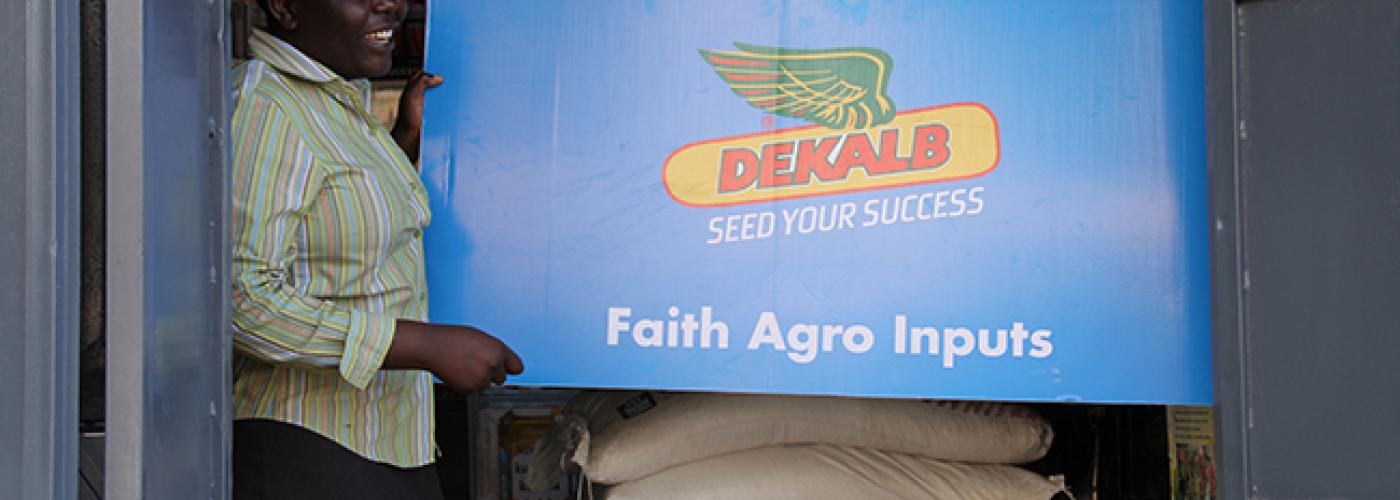3 Questions with Najib Seguya on Pay-for-Results Financing
Image

Najib Seguya of the Feed the Future Uganda Youth Leadership in Agriculture (YLA) activity’s Strategic Activities Fund team discusses key considerations to keep in mind when designing a pay-for-results (PfR) program, also known as performance-based financing. Alex Tekakwo, Anthony Nyende, and Sara Tohamy also contributed to this interview.
What is pay-for-results, and what are some of the advantages of using it?
Pay-for-results (PfR) is a financing mechanism wherein funders only offer payment upon the completion and verification of pre-identified activity outcomes, rather than for activity inputs. Whereas traditional financing methods provide capital at the inputs stage, PfR is results-based, meaning that grantees receive payments after completion and verification of achieved milestones. These milestones must be relevant and technically sound; show a clear relationship between tasks, milestones, and payment; contain verifiable results, and be measurable by means of indicators.
Our project, the Uganda Youth Leadership in Agriculture (YLA), uses PfR as a financing mechanism for its $2.2 million grants program, which increases the incomes, skills, and competencies of youth in agriculture. Targeted grant recipients include private, youth-led agricultural organizations working in areas such as research studies, mobile money, information services, labor-saving technologies, and more.
As for advantages, PfR ensures effective and cost-efficient development programming because it addresses two key considerations: risk and data collection (measurement). PfR alleviates risk from the donor by shifting some of it over to the implementer or recipient; and simultaneously promotes rigorous data collection to ensure that implementers and grantees have achieved outcomes that meet agreed-upon standards.
What are a few of the lessons learned from YLA’s initial challenges with PfR and the need to adapt to a prorated PfR mechanism?
YLA offers both fixed amount awards and in-kind grants, with a majority of grants being fixed amount awards. At the outset of the program, grants were designed for 12 to 18 months of programming. However, by year three of implementation, our team realized that the desired milestones and results were not being achieved on time. Grantees were, thus, put in a very vulnerable position — their milestone payments put at risk. One important lesson learned was the feasibility of achieving results in just six months through “quick-in, quick-out” interventions. With more periodic reporting and more efficient systems to monitor progress, the program was able to focus on high-quality indicators measuring impact, as opposed to focusing on collecting a large quantity of indicators. For example, Faith-Agro Inputs Limited received a grant over a period of six months and, with its intervention, was able to reach more than 1,000 youth with both soft and hard skills, including entrepreneurship, employability, personal financial management, leadership, and life skills.
Secondly, the inability of grantees to fully achieve milestones highlighted the importance of focusing on interventions that prioritize the needs of partners rather than those of the project. To design and implement a grant program that achieves project objectives while benefiting partners, grantees should be heavily involved in identifying milestones, deciding on payment schedules, and creating workplans.
Additionally, the YLA team found that attaching weights, and thus greater payments, to activities that greatly contributed to YLA key results created the incentive for higher performance. Consider the grant awarded to the Private Education Development Network (PEDN), which seeks to increase savings through the use of the Mastercard Kupaa platform. YLA attached a higher weight (35 percent), and thus a larger payment, to milestones related to savings using the Kupaa platform; whereas, a milestone such as setting up meetings with local stakeholders had a lower associated weight (8 percent). Therefore, PEDN will be paid more for efforts towards helping students save through the Kupaa platform.
What are some important things to keep in mind for those who are looking to incorporate PfR into their project activities?
For a performance-based program to be successful, there must be some kind of well-defined, measurable output that is being evaluated. To secure impact and timely payment, milestones should be set against outputs that can be clearly identified and verified. Well-defined, measurable outputs must also be coupled with existing, reliable data sources and rigorous monitoring systems. These are critical to not only tracking results and paying on achievement, but also informing continuous programmatic improvement.
Additionally, the cost of the program must be clear and relatively fixed. Having highly variable costs for an activity poses several risks for implementation that can result in a lack of funding for partners and the stagnation of project activities.
Finally, throughout the entire design and implementation process, it is imperative to understand the grantee perspective and the process that leads them to achieving results. By designing interventions that benefit the partner and making deliberate efforts to engage them starting at the negotiation stage, project activities are better set up for success.

